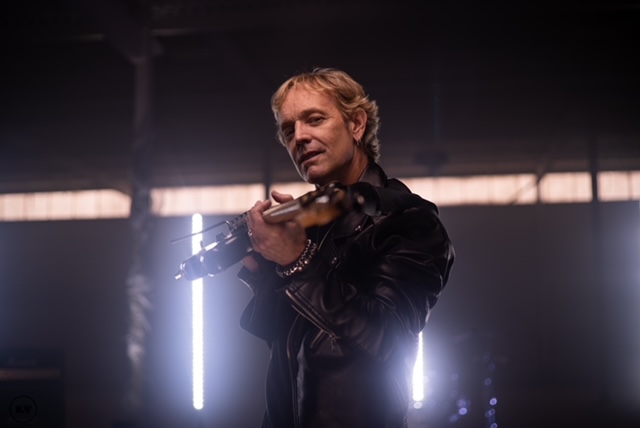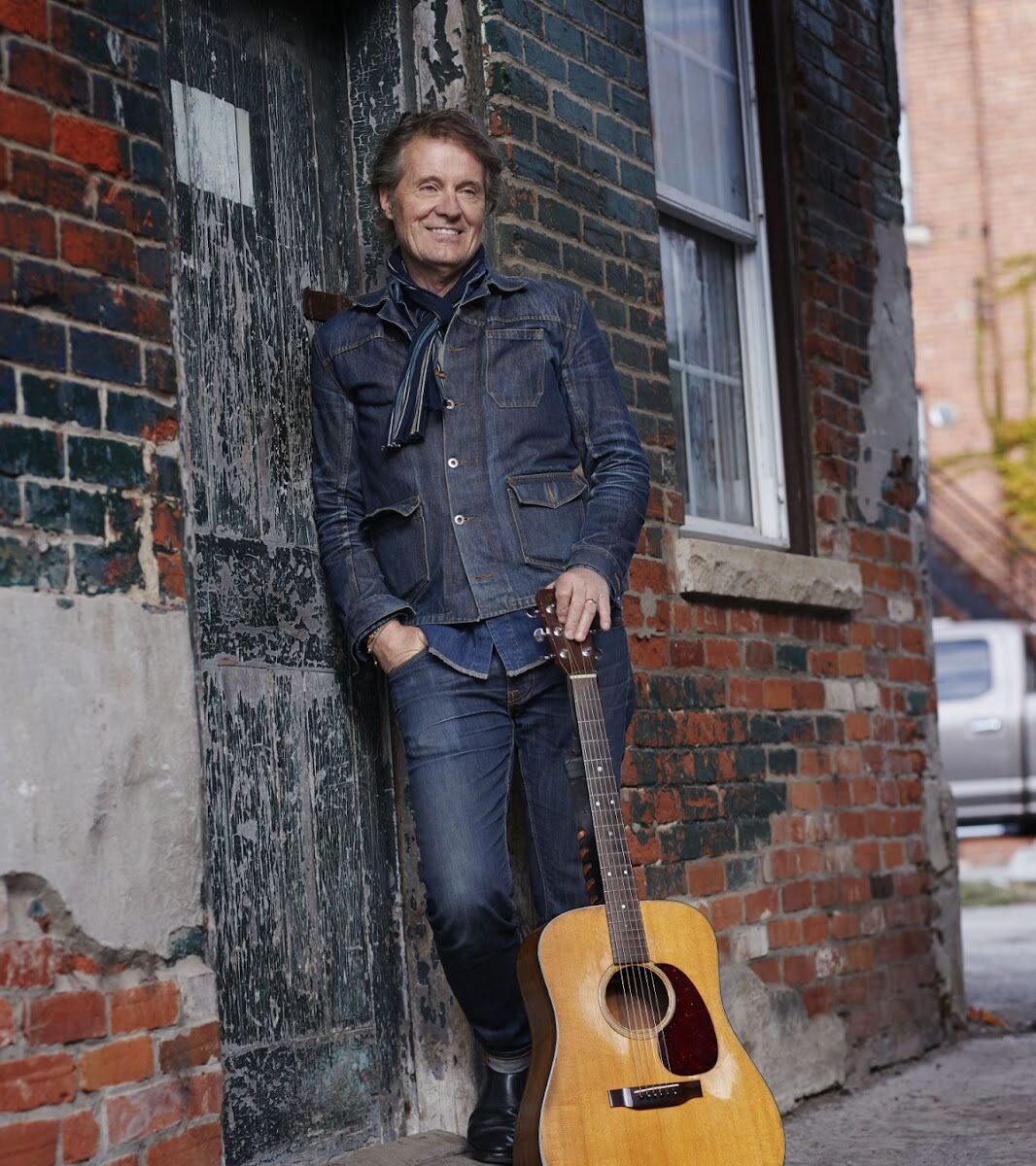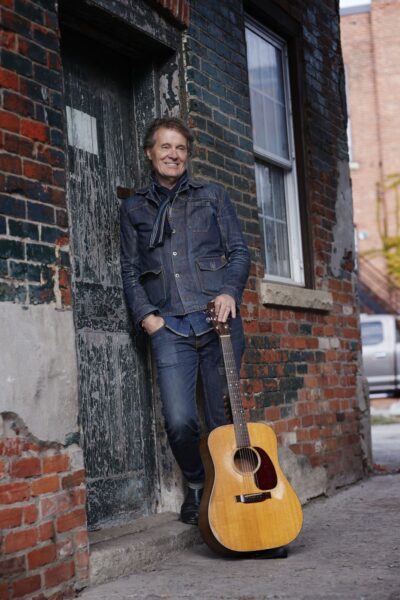Upon the mention of the name Lightfoot, words like troubadour, singer/songwriter genius, and Canadian folk music legend come to mind…to name a few. But more, he has the ability to write songs that stick like glue. Completely memorable songs that have woven their way through our lives, with each one reminding us of a certain time, a certain moment, heartache, love, laughter, friends, family, and childhood memories.
His ability to write songs with such staying power stemmed from the music he was heavily influenced by growing up. These were songs with simple melodies he learned during his early singing days with the local church choir, as well as regional folk and country pieces. He was especially fond of the older favourites, in particular those of American popular songwriter, Stephen Foster, who composed such staples as “Oh Susannah”, “Camptown Races”, and “Beautiful Dreamer” back in the mid-19th century. These were the tunes of the day that were on everyone’s lips…sung, played, and whistled, with beautiful, catchy, and very memorable melodies. This would become the early template for Lightfoot‘s song stylings.

But it would be the influence of Bob Dylan in 1964, that would drastically alter the way he would approach songwriting forever. It opened up a whole new way of expressing himself freely through personal experience and reflection. He wrote folk songs and ballads about love, fond memories, troubled relationships, human weakness, heartbreak, and even both sides of infidelity. Songs like, “Pussywillows, Cat-Tails”, “Bitter Green“, “Rainy Day People“, “If You Could Read My Mind”, “Beautiful”, and “Affair On 8th Avenue”, were some of the most tender, heart-in-hand pieces of music ever written. He wrote about the Canadian landscape and the blue collar lives of fishermen, coal miners, railroad workers, and their families. He also wrote openly about current events that had affected him, such as “Black Day In July”, about the 1967 race riots in Detroit, and of course, “The Wreck Of The Edmund Fitzgerald”, a song he wrote to honour the 29 crew members who lost their lives at the hands of a ruthless November storm on Lake Superior in 1975. Many of his pieces have been performed by artists such as Peter, Paul and Mary, Elvis Presley, Marty Robbins, Bob Dylan, Ian and Sylvia Tyson, Johnny Cash, Neil Young, Barbra Streisand, Judy Collins, Glen Campbell…and the list goes on.
Lightfoot’s touring band has grown over time to become a team of four, loyal, and longtime members. They are bassist of 45 years, Rick Haynes, Barry Keane on drums (1975-present), Mike Heffernan on keys (1980-present), and the newest member, Carter Lancaster, who joined in 2011, after long-time lead guitarist and friend, Terry Clements suffered a fatal stroke. Clements, who had been onboard for 41 years, was an integral part of developing many of Lightfoot’s popular songs such as, “Carefree Highway”, “Sundown”, and the haunting chords of “The Wreck Of The Edmund Fitzgerald”.
Southam Hall inside the NAC was packed solid for the show on Saturday night. From where I was standing near the stage, poised and ready to take my first photos, I looked up at the vastness and beauty of this 2,300-seat state-of-the-art performing hall, and it nearly took my breath away. The stage backdrop consisted of gorgeous vertical strips of fabric that changed colours throughout the performance, combined with various patterned effects that were very visually stimulating. The crowd erupted with plenty of cheering and applause as Lightfoot made his way onto the stage. It was an amazing moment, and I could feel the wave of adoration for this man, whose music has touched so many hearts and lives.
Lightfoot took his usual stance up front and centre, and his energy never ebbed while he stood and played a full two sets worth of his past hits, crowd favourites, and some of his more current material. I asked him later how he’s kept up this kind of vitality in his performances, and he simply stated that it’s the performance itself that fills him with rejuvenation. He also heads to the gym on a daily basis to keep himself active and believes the workouts are “good for the breathing apparatus”.

Before he began, Lightfoot joked: “The reports of my death have been greatly exaggerated”…to an immediate response of crowd laughter. The statement was in reference to a death hoax that occurred in 2010, apparently sourced from a Twitter feed. His opening pieces were selected from some of his more current work, including “A Painter Passing Through”, from his 1998 album of the same name, which had an almost childlike quality to it, with its uplifting rhythm and melody. This was followed up with the similar paced, and instantly recognizable, “Rainy Day People”, which garnered a rush of applause. He later serenaded us with the lovely ballad, “Shadows” (Shadows – 1982), a song about keeping the light of love alive in a relationship. This flowed directly into the opening chords of another huge crowd favourite, “Beautiful”, whose gorgeous winding melody has been played at many-a matrimonial first dance.
Towards the end of the first set, the band performed an almost medley-like string of his more popular material, including “Carefree Highway”, “Cotton Jenny”, “River Of Darkness”, “Sundown”, and one of his early pieces, “Early Morning Rain”.
Highlights from the second set included a mention of “the 29 men who continue to sleep at the bottom of Lake Superior, as we sit here in this lovely theatre”, before he and the band delved into the wonderfully swaying “The Wreck Of The Edmund Fitzgerald”. I enjoyed how the song kicked into full swing following the second verse, which emphasized the rocking motion of the music. I was particularly impressed with Lancaster’s performance, who mastered the lead pieces on electric guitar, as well as his key embellishments on all the material played. The band as a whole, added a warm lushness and polish to all the music, and moved from subtle accompaniment to instruments going full tilt where needed. I also enjoyed a very textured piece called, “Wild Strawberries” (Waiting For You – 1993), that flowed from soft, minor tones in the verses, which emphasized Lightfoot’s buttery lower vocal register, to brighter tempoed choruses.

Toward the end of this final set, more swells of applause came with the classic ballad, “If You Could Read My Mind” (Sit Down Young Stranger – 1970), and again later with “Canadian Railroad Trilogy”, a piece he was commissioned to write by the CBC for Canada’s 100th birthday in 1967. Lightfoot joked, “I get most of the notes in this one, but if I don’t, I alter the melody a little bit”. I also enjoyed the country-blues rocking rhythm of “Baby Step Back” (Shadows – 1982), which featured another smooth guitar solo by Lancaster. Lightfoot cheekily introduced this one with the pseudo title, “Meet me by the rock pile, honey, and I’ll get a little boulder there”.
The encore included, “Song For A Winter’s Night”, a tune Lightfoot thought suited the time of year, and well chosen for its Christmas message of family warmth and cheer. The band took their final bows and left the stage and the audience, who were on their feet, and engaged in a roar of applause. What I found especially endearing, was Lightfoot’s reappearance to take a second bow at the front of the stage, in a display of personal respect and gratitude to the audience.
Lightfoot and his band continue on tour with the next performance in Belleville, Ontario, followed by a four night stint at Massey Hall, which will bring this year’s tour to an end. Toronto’s Massey Hall continues to hold a near and dear significance to Lightfoot, who was born and raised in nearby Orillia, Ontario. It was here in 1952 at the age of 12, he experienced the magic of performing on the grand stage during a vocal contest, and won. It was at that moment, he knew what he wanted to do for the rest of his life. Now at 76 years of age, Gordon Lightfoot celebrates a career of well over half a century, with 20 albums to his credit, multiple awards including 16 Junos, and a multitude of songwriting Hall Of Fame inductions. In 2003, he was made a companion of the Order Of Canada. Despite the changing tides of musical evolution, technology, the record industry, and his own health issues, he has carved out his own unique sound, with songs that continue to stand the test of time, and an undying musical passion that has not only led him to great success, but has always been his saving grace.














Comments are closed.